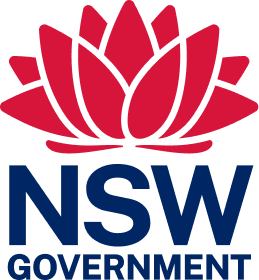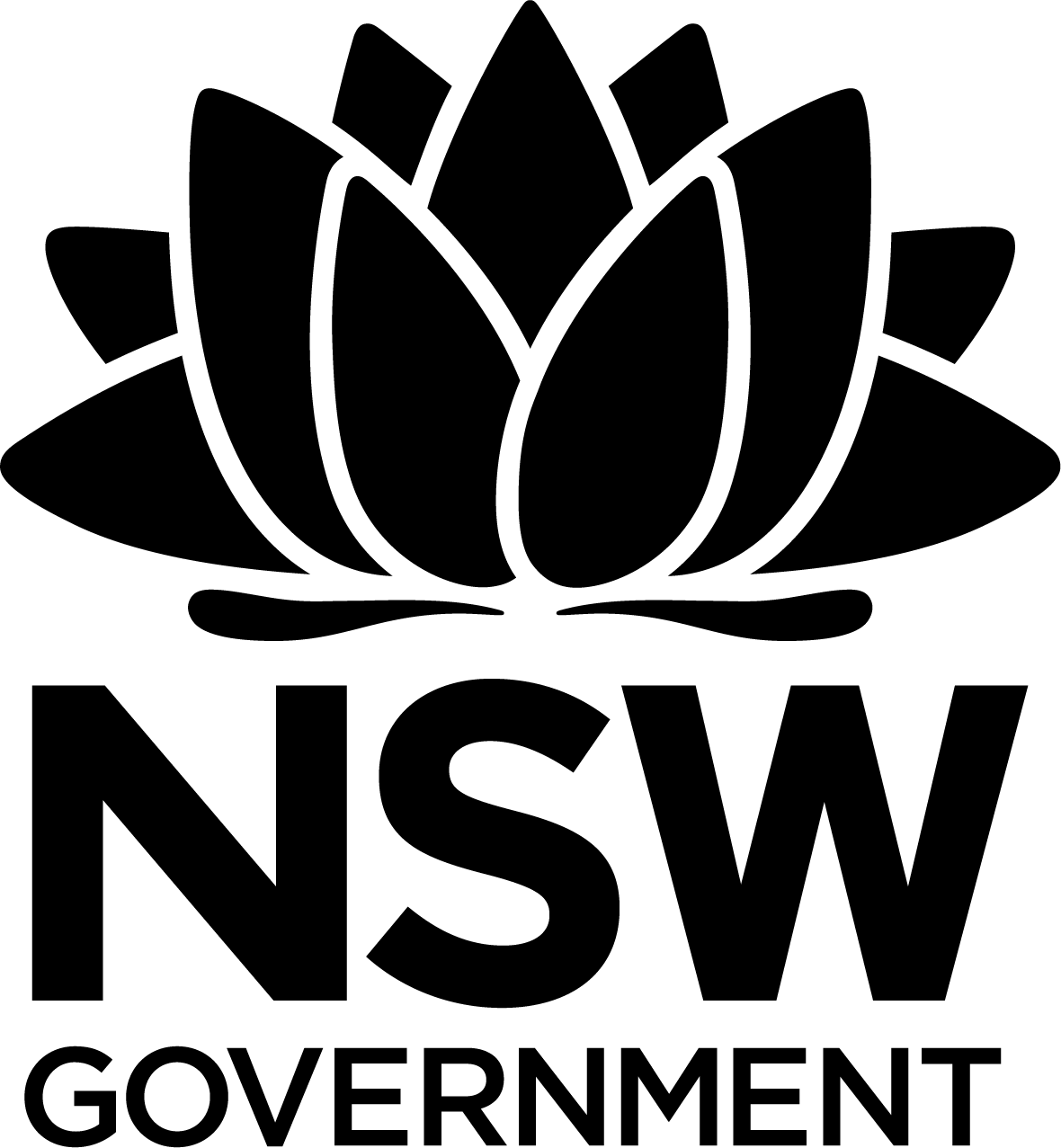
Crown land manager resource
What is Crown land
Crown land is land held by the NSW Government on behalf of the public, for the benefit of the community. The government and the community work in partnership to manage the Crown Estate. Much of this land is managed under leases and licences, especially in the Far West of NSW. Crown Lands is the largest holder of land in NSW.
Crown land may be:
- transferred to First Nations people to manage the land according to their tradition or custom.
- sold (if no longer benefiting users or serving a public purpose).
- reserved for reserves including national parks to protect our natural environment.
- licensed for a particular activity or use such as conservation, recreation, grazing, agriculture, jetties and pontoons, boat ramps, coastal protection works, and roads.
- leased for a range of purposes that includes tourism, renewable energy, mining, agriculture, conservation and irrigation, and other activities.
- dedicated to a Crown land manager for a specific purpose such as community parks, state heritage sites, town squares, community halls, coastal lands, waterway corridors, sporting grounds, war memorials, cemeteries, racetracks, showgrounds, caravan parks, camping areas, travelling stock routes, rest areas, walking tracks, and community and government infrastructure and facilities.
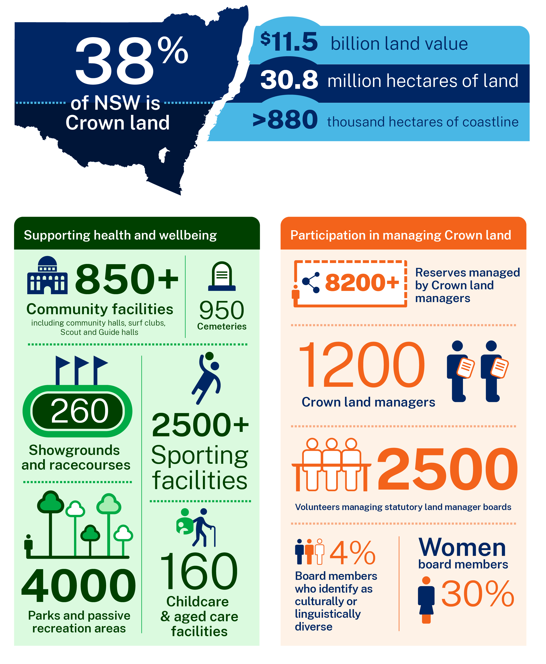
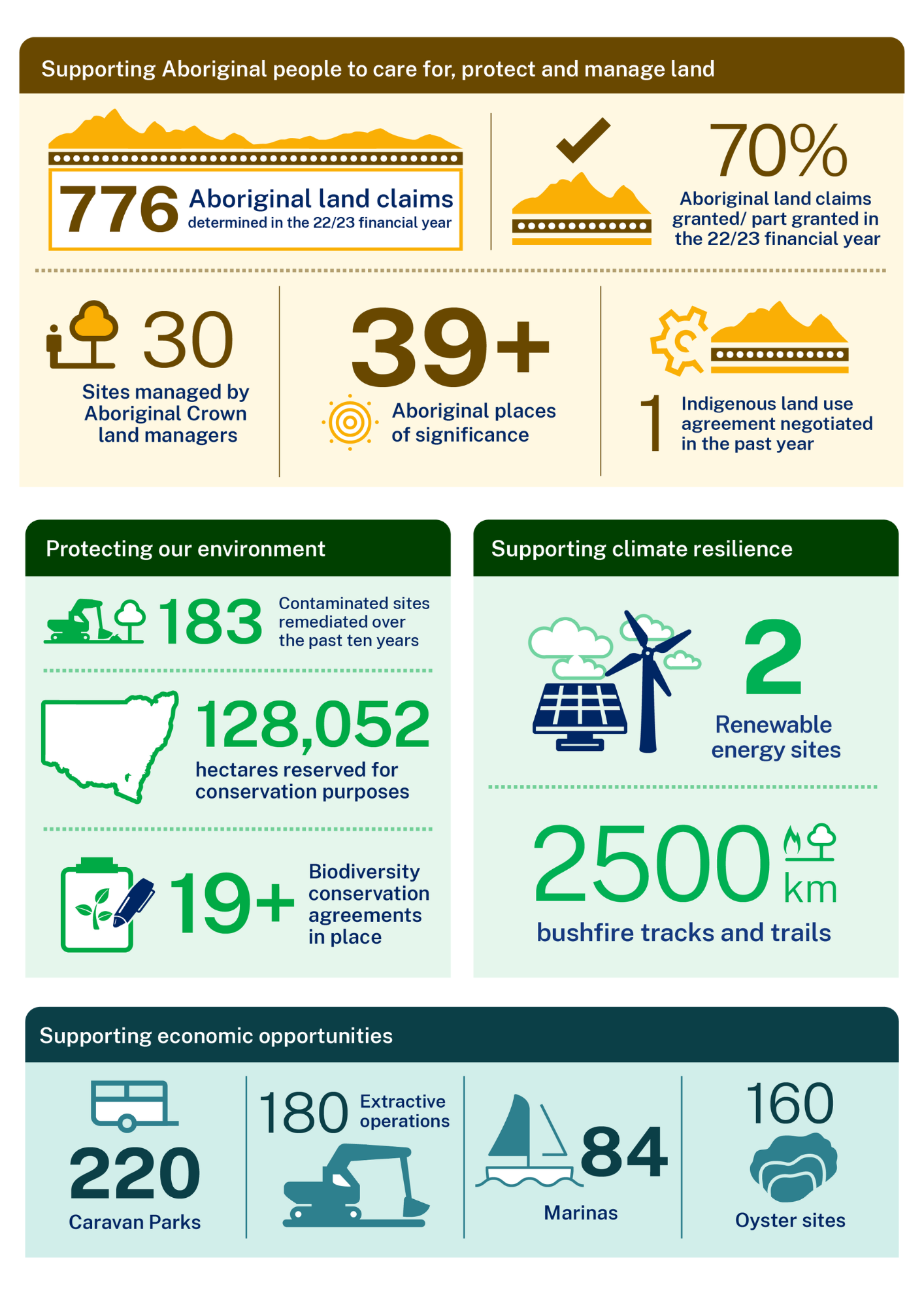
Types of Crown land
Reserves
Crown reserves are land set aside on behalf of the community for a wide range of public purposes, including environmental and heritage protection, recreation and sport, open space, community halls, special events and government services.
'Reserved' versus 'dedicated' land
Where Crown land is set aside for a public purpose, it can be either ‘reserved’ or ‘dedicated’, which makes it available only for a use that will deliver public benefit or good.
The government order or notification (published in the NSW Government Gazette) of the reservation or dedication of Crown land sets out the purposes for which that reserve may be used.
There is little difference between reservations and dedications when managing, visiting and using the land, and they are generally grouped under the name ‘Crown reserves’.
Crown land that has been dedicated for a purpose is a more enduring form of reserve. Some of our most valuable public land in NSW, such as Hyde Park in Sydney, is dedicated. Dedication can only be removed with the agreement of both Houses of the Parliament of New South Wales.
Regardless of whether land is reserved or dedicated, the Community Engagement Strategy ensures that the community can have their say before the minister responsible for Crown land makes a decision to remove a reservation or dedication from Crown land
Cemeteries and crematoria
Over 240 cemetery and crematorium operators provide interment services across 1,400 facilities in NSW. While crematoria are mainly operated privately, many of our cemeteries are on Crown land.
There are five large Crown cemetery operators operating in Greater Metropolitan Sydney, accounting for most burials in Sydney. Across the rest of NSW, cemeteries on Crown land are generally operated by local councils.
Crown cemetery operators are appointed and regulated under the Crown Land Management Act 2016 and the Cemeteries and Crematoria Act 2013. Cemeteries & Crematoria NSW is the lead agency that supports and regulates the internment industry.
Commons
Commons allow local residents to use land in common, generally for grazing and other agricultural purposes. When the common is set aside in a government order or notification, these set out who is eligible to use the land and the type of use permitted.
Commons differ from Crown reserves and other public land in that they were created for the use of local residents.
More details on commons management
Waterways, estuaries and beaches
Land associated with tidal and non-tidal waterways, including oceans, rivers and lakes is Crown land—this means most river, creek and lake beds, estuaries and beaches. However, many man-made lakes and canals are not Crown land.
Western lands
The Western Division covers more than 32 million hectares: almost half of NSW. The eastern boundary of the division runs from Mungindi on the Queensland border to the Murray River near Balranald. The majority of this area is Crown land, and is primarily used for grazing or agriculture. There are also leases held for residence or business.
Working closely with the community and local government, the department administers leases, carries out sustainable land management activities and programs, and maximises opportunities for land diversification and regional development.
More details on Western lands
Crown roads
Crown or ‘paper’ roads were established during the settlement of NSW and are part of the state’s public road network.
Generally, Crown public roads provide access to freehold and leasehold land where little or no subdivision has occurred since the original Crown subdivision of NSW in the early nineteenth century. Most Crown roads are found in rural areas and many have never been constructed, so they are called ‘paper roads’.
They are managed under the Roads Act 1993.
National Parks and State forests
National Parks and State forests are also public land, but are administered under different legislation to the main types of Crown land. National Parks are administered under the National Parks Act 1974, while State forests fall under the Forestry Act 2012.
NSW National Parks and Wildlife Service manages national parks, and the state-owned Forestry Corporation manages State forests.
A significant asset for our state
Crown lands make a positive contribution to the social, economic, environmental and cultural features of our state.
Crown lands deliver a variety of services to both government and the broader community, including:
- access to public land for recreation, tourism, hospitality and retail
- facilities for recreation, racing and sporting pursuits
- access to areas of natural, cultural and heritage significance
- natural disaster mitigation such as bush fire trails, asset protection zones, flood refuge and mitigation
- environmental services such as biodiversity
- agricultural and primary production services such as grazing, travelling stock routes, quarries, mines and oyster depuration
- essential services communication towers, electricity networks, pipelines
- maritime and waterway services such as harbours, breakwalls, lighthouses, jetties and wharves, slipways, fishing cooperatives, marinas and minor dams.
Uses of Crown land
The use of Crown land depends on the type and the purpose of the land. Western lands are mostly used for agriculture and grazing, with some residential and business uses. Generally, the use of a reserve must be consistent with or support the purposes stated in the reservation or dedication.
Where possible, multiple uses of reserves are encouraged, where those uses are consistent with the purpose of the reserve. For example, a reserve for public recreation could be used by various sporting groups, by the general public for recreation and with ancillary commercial activity such as a kiosk or café to improve users’ recreational experience.
It’s important the use does not affect native title rights under the Native Title Act 1993.
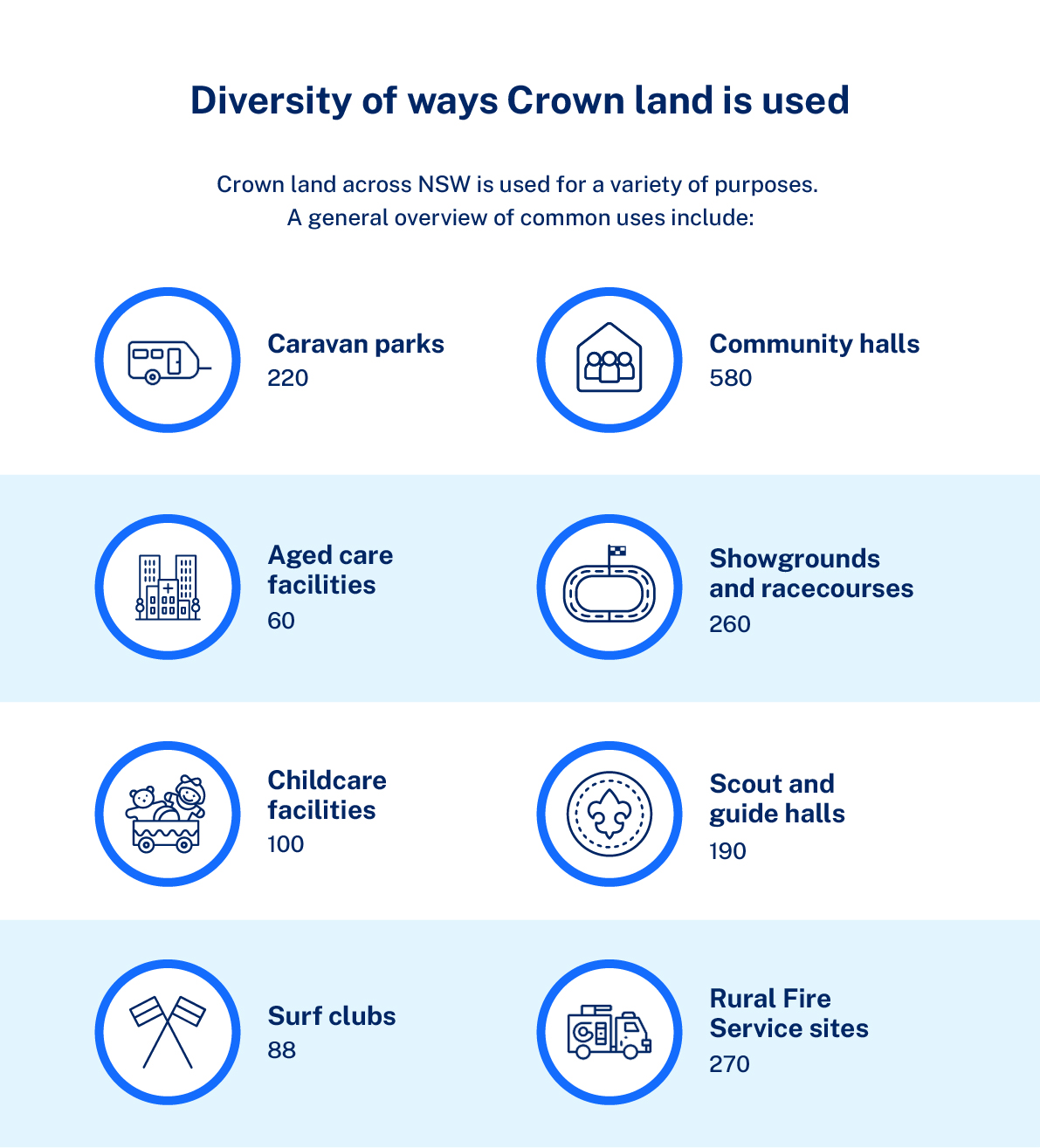
Crown land in NSW - a historical perspective
When New South Wales was first colonised by the British, the British presumed that all land in the colony was owned by the British monarchy, or Crown.
As the colony developed and demand for private landholding grew, land was made available for sale or lease to the public. The system of reserving Crown land developed at that time to ensure that land was also retained for public and future uses. New land can also be added to the Crown land estate via acquisition or other means.
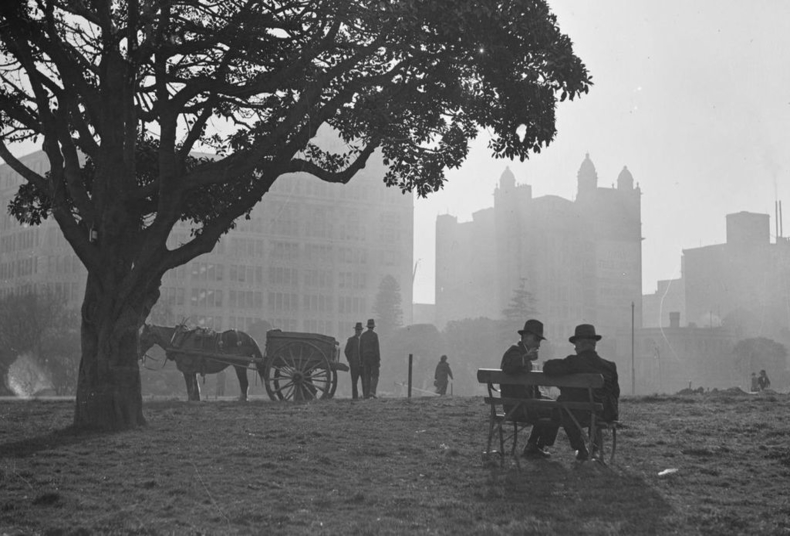
While community thinking has evolved to now recognise Aboriginal people and their traditional ownership, the legacy of the Crown reserve system is that large areas of land are owned by the public for the benefit of the public, rather than by private individuals or businesses. Learn more about Aboriginal interests.
This Crown land manager web resource was printed on 22 Feb 2025. The information contained in this web resource is based on knowledge and understanding at the time of writing Feb 2025. However, because of advances in knowledge, users are reminded of the need to ensure that the information upon which they rely is up to date and to check the currency of the information by referring to the website (www.reservemanager.nsw.gov.au).
© State of New South Wales through Department of Planning, Industry & Environment 2025.
Page link: https://reservemanager.crownland.nsw.gov.au/who-we-are/what-is-crown-land
